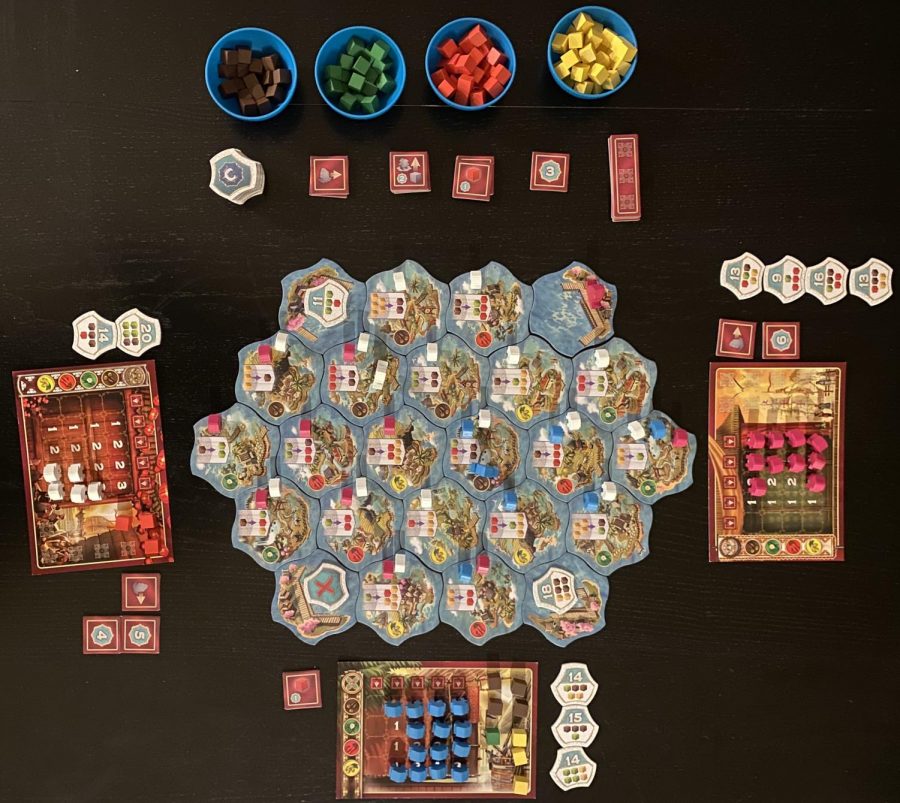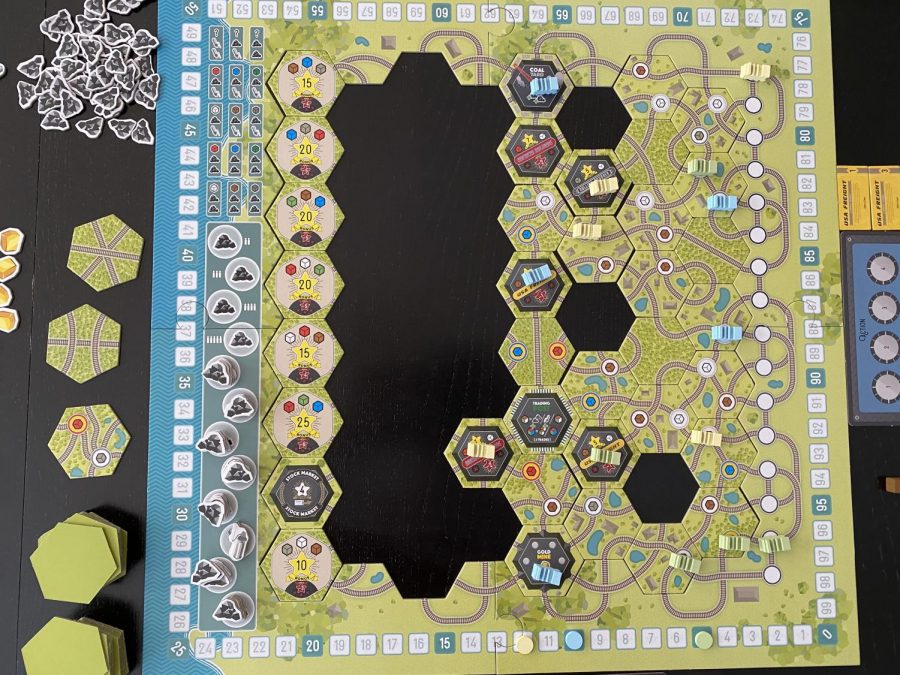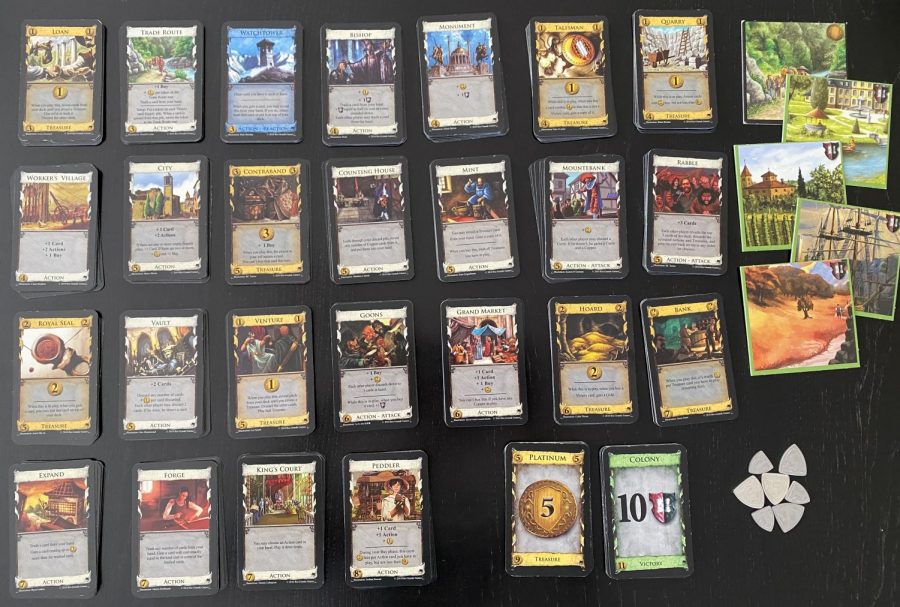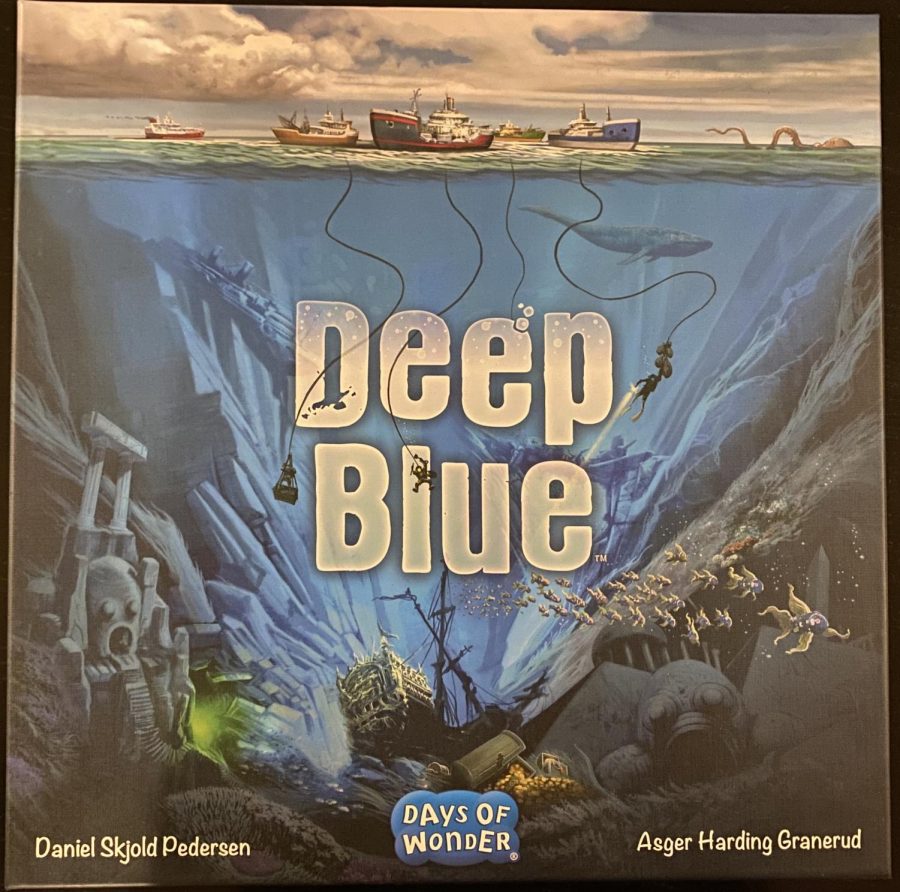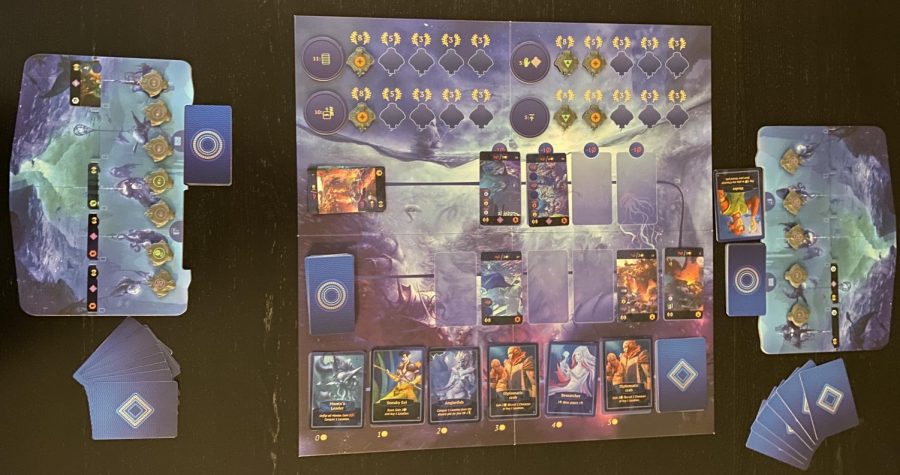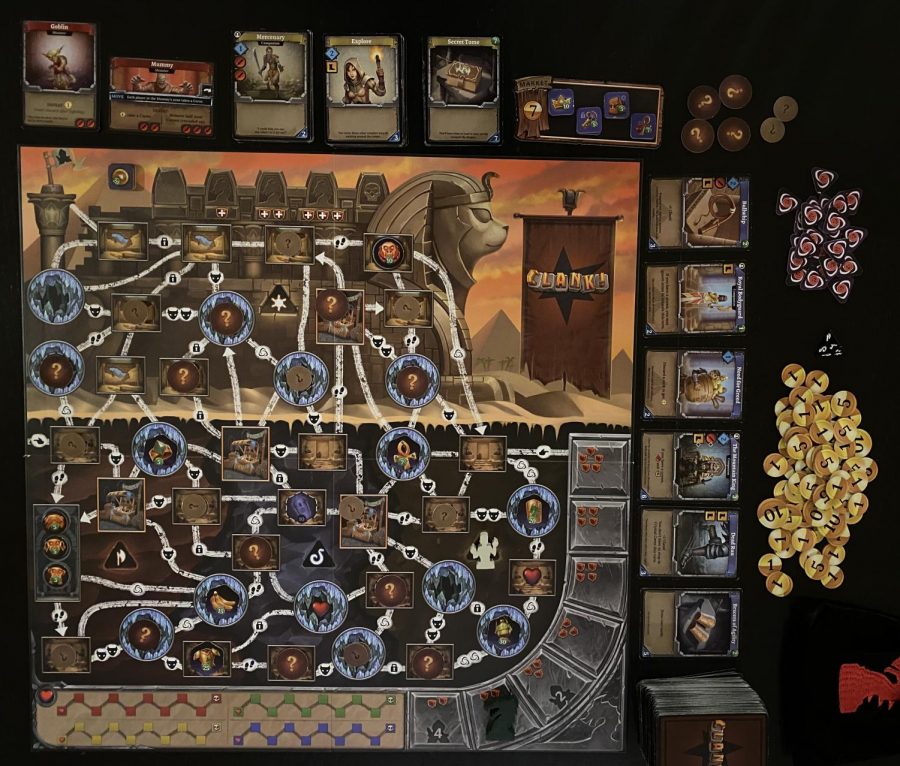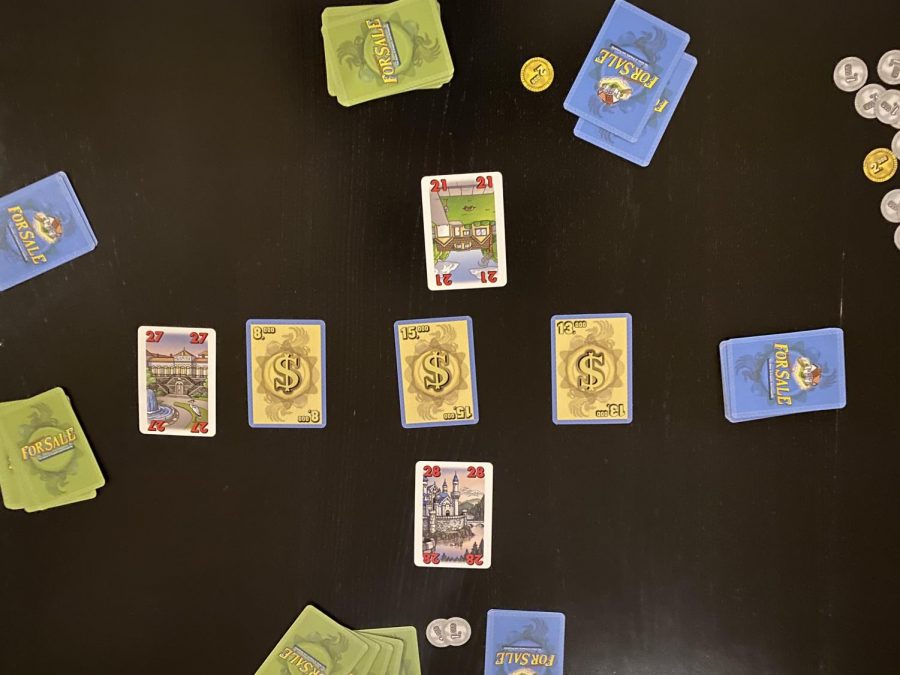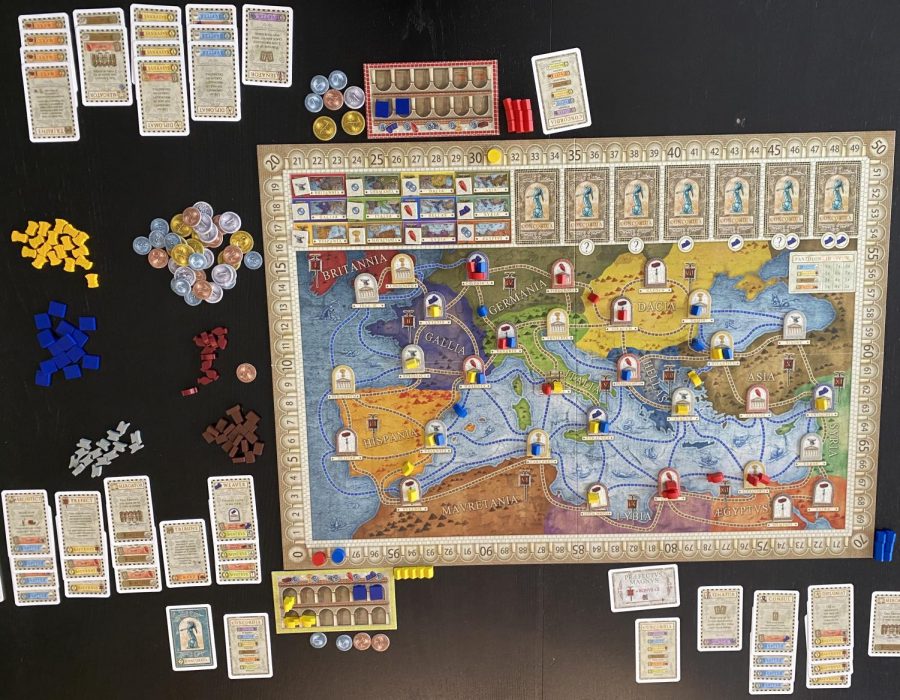A while ago, I wrote a review for Century Spice Road, a great set collection and engine-building game that is straightforward, easy to learn, and fun to play. This week, I’ll be reviewing the second game in the Century series, Century Eastern Wonders.
The goal of collecting sets of different colored cubes to get victory points is still the central part of the game. However, instead of making a trade route like in Century Spice Road, players navigate their ship around a modular board, build trading posts, and collect bonus tiles in their quest to collect certain spices, which are represented by the cubes.
Another neat element of the Century series is that the games can be combined; there is another set of rules included in Century Eastern Wonders for combining the game with Century Spice Road. I won’t be looking at the combination game in this review, but I will show you how to play the stand-alone Century Eastern Wonders game. Then, I will tell you my thoughts on it independently and compare it to Century Spice Road.
How to Play
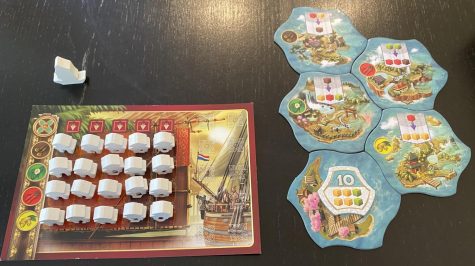
The game board for Century Eastern Wonders is comprised of interlocking hexagonal tiles. Most tiles are market tiles that depict a trade, two sets of cubes connected by an arrow. The other tiles are ports, where players will have to move their ship to collect the point token face-up on it. Point tokens show a point value and the cubes that a player must pay to claim it. Near this board are the supply of cubes, bonus tiles, and a stack of point tokens. Each player will get a boat, player board, and outposts to put on each space of their player board.
At the start of the game, each player, in reverse turn order, will place their boat somewhere on the board and choose one of the starting cube options listed in the rulebook to start the game with. Now it is time for players to begin taking turns. On each turn, the active player may move their boat and then must perform a market action, port action, or harvest action on the tile where their boat ended.
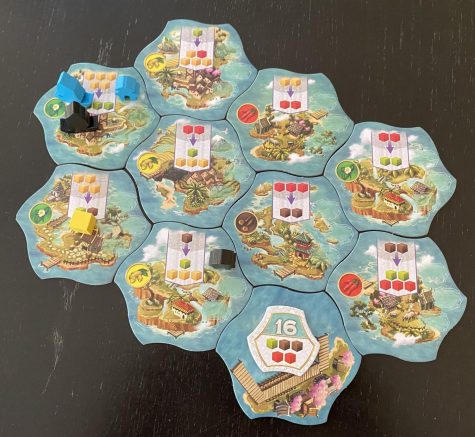
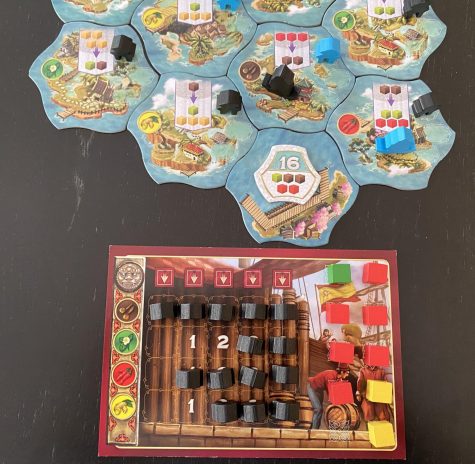
Players may move their boat to an adjacent space once each turn for free. Players may then continue to move to adjacent spaces by placing a cube from their supply on each tile they leave. If the player ended their movement on a market tile and any other players also have their boats there, they must pay each of those players one cube. Lastly, the player may add to their supply any cubes left on that tile due to previous actions. Next, the player must choose one of three actions to take on this tile.
One of those options is to harvest, which a player can do when their boat is on any tile. A player performs the harvest action by taking two yellow cubes and adding them to their player mat.
The option that players choose most often is a market action, which can only be performed on a market tile. When a player takes a market action, they may trade the cubes listed on the top of the tile for the cubes listed at the bottom of the tile. The arrow on the tile marks the way to conduct the trade. The player may make this trade as many times as they want to as long as they have enough cubes.
Before the player can trade, they have to make sure that they have one of their outposts on that market tile. If they do not have one on this tile, they must add one by paying one cube, or two cubes in a two-player game, to the supply for each outpost already on the tile. This means that the first outpost on each tile is free, and later outposts are more expensive. When placing an outpost, players must place the leftmost outpost from the row on their player board that matches the symbol on the market tile. When a player places all the outposts from one column of their player board, they immediately choose a bonus tile that provides a special ability for the rest of the game. Furthermore, outposts in the second column and beyond on your player board have points underneath them that you can earn if they are placed at the end of the game.
The last action that a player can take is a port action, which can only be taken on one of the four port tiles. Each port tile has a point token on it. When taking a port action, a player must pay the cubes listed on that port’s point token to take it. The next point token from the stack replenishes the port. When a player claims their fourth point token, players finish the current round of play and then add up their scores. Players add up the value of their point tokens, bonus tiles, points revealed from placing outposts on the board, and one point for each non-yellow cube in their inventory. The player with the most points wins.
Final Thoughts
Century Eastern Wonders is a great sequel to Century Spice Road, but you don’t have to know anything about Century Spice Road to like Century Eastern Wonders. Before I get into comparing the two games, I’ll tell you a little bit about what I think of the sequel independently.
What I like about Century Eastern Wonders is that players are doing many simple things that all work together to create an amazing overall experience. The set collection scoring mechanism is a simple one, but the way you get the cubes is quite interesting. The game revolves around building a system of outposts on market tiles, so you can use a sequence of market actions to get the combination of cubes that you need for a point token before another player.
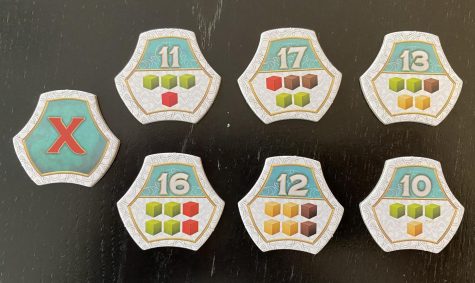
The journey to getting a point token is always tense because you never know when someone else might beat you to it with a brilliant move or even trouble you when moving their boat or building an outpost on a market tile. It’s easier to get blocked with more players; despite this aspect, the game continues to provide interesting choices as to what to do next. There is also a lot of thought to put into your strategy to get the most points in as few moves as possible. I have to think through what trades I’ll need to make, where on the board to harvest, and how to get enough cubes for extra movement and building outposts.
Another simple mechanism that highlights another strategy for getting points is the idea of clearing columns on your player board. Clearing a column is a great thing because it lets you take a bonus tile, which can be a special ability for early in the game or points for later in the game. I do feel that most players always go for the extra movement bonus tile first and then the point bonus tiles for everything afterward. I’m not sure if the extra movement is much more powerful than the other bonus tiles, but I would have liked it if all the bonus tiles felt equally appealing to take. It is not that the other powers are uninteresting, but that the extra movement and point bonus tiles are the easiest ones to understand and use, especially for new players who may not have planned a great route with their boat.
With the exception of players being drawn towards the same bonus tiles, Century Eastern Wonders offers a large amount of replayability. Not all of the market tiles are used in every game, and the tiles are placed in different places. This creates new challenges and opportunities in each game as players have to study the board to plan their routes. One may suggest that there would be considerable thinking time to study the board and plan the most efficient route. However, I’ve found that the game plays fast because it has an engine-building nature where each move leads to the next move. Because of the connection between moves, turns are actually very short as long as players are always thinking about their next few moves. The game also feels short because it ends when any player gets their fourth point token. I’ve sometimes felt that only getting four point tokens is too few, but that just makes every move more important.
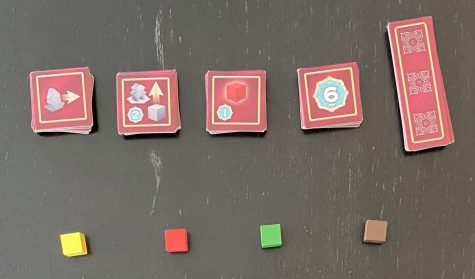
When comparing Century Spice Road to Century Eastern Wonders, the natural questions are, “Which game is better?” and, “Do you need to get both?” I think you should get both games if you like any of the games in this series; your overall turn in each game is different, and both games can be combined to create a third game. I like both of these games equally, and which one I play usually depends on the group and how I feel. Century Spice Road is definitely the one I would usually teach first because it is slightly simpler. Century Eastern Wonders, on the other hand, is something I could teach to someone who is familiar with Century Spice Road or plays a lot of games because it has a few extra rules that complicate the game.
The structure of both games are quite similar, and there are many parallel rules in them. For example, the idea of dropping a cube on each card you want to skip in Century Spice Road is similar to putting cubes on each additional tile you move your boat in Century Eastern Wonders. In both games, most to all of your points come from the point cards or point tokens. However, Century Eastern Wonders adds another minor scoring method with the outposts and bonus tiles. In Century Spice Road, you still have to work towards a point card even when you knew that another player was going to end the game before you could get it; in Century Eastern Wonders, players can work for something besides point tokens when they don’t know what to do or reach the end of the game and know that they cannot get anymore point tokens.
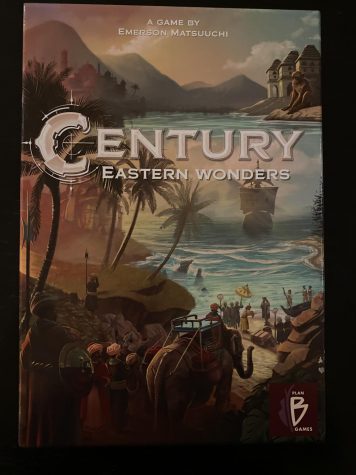
Both games have similar components. The cubes and bowls for the cubes are the same in both games and of good quality. The tiles, tokens, and outposts in Century Eastern Wonders are also of good quality and have good artwork. My only complaint about the artwork in Century Eastern Wonders is that it is hard to see the spots on the tiles where players should put their outposts. There are also only three spots on each tile, and the rules for placing a fourth outpost on a tile are not specified in the rulebook, so it is unclear if there is supposed to be a restriction to the number of outposts on a tile in a four-player game.
Overall, Century Spice Road shines for its engine-building simplicity, and Century Eastern Wonders stands out for its secondary scoring system and route-planning approach to a set collection game. I highly recommend Century Eastern Wonders to anyone who likes Century Spice Road or thinks that this game sounds interesting, and I rate this game the same as Century Spice Road at an 8.5 out of 10.
[star rating=”4.25″]

